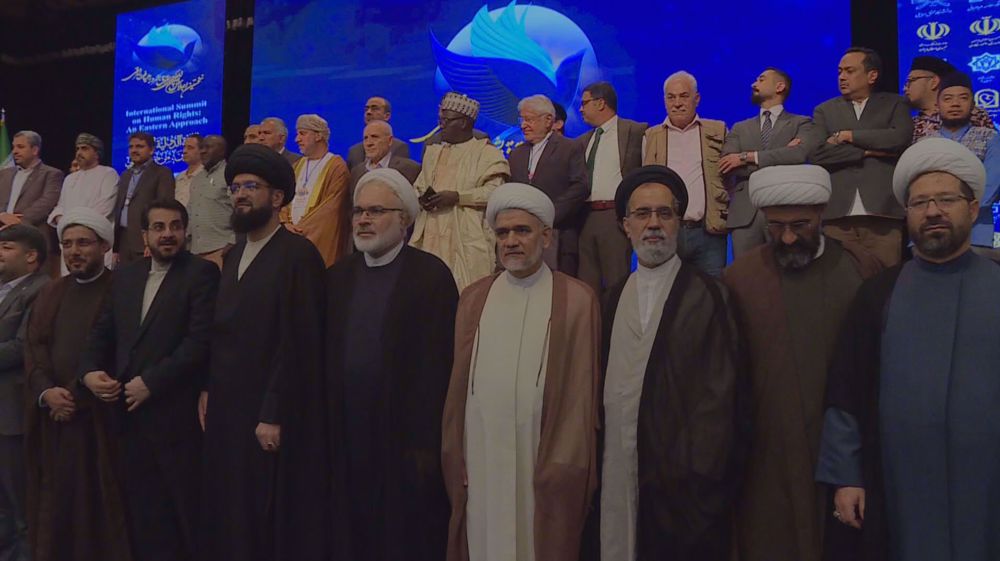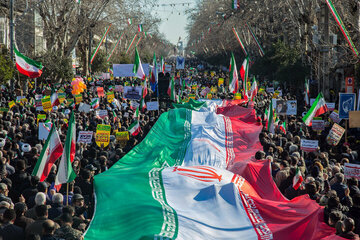Azerbaijan's bid to acquire fighter jets from Pakistan, combined with Armenia's positioning near the West and India, poses a threat to peace in the Caucasus. Such military actions may escalate tensions in the region, leading to an arms race and potentially sparking future conflicts.
ALWAGHT- The evolving political and security landscapes across the globe, notably underscored by crises in Ukraine and Gaza, have prompted numerous countries to reassess the status of their military arsenals to forestall the escalation of crises. Consequently, nations sensing the looming specter of military threats have embarked on efforts to fortify their defense capabilities, often seeking support from influential allies.
Driven by the ambitious initiatives in Karabakh, Ilham Aliyev, the President of Azerbaijan, who recently secured his fifth presidential term, has placed military acquisitions at the forefront of his administration's foreign policy agenda. Reports suggest that Azerbaijan is in talks with Pakistan to procure an undisclosed number of fourth-generation "JF-17" fighter jets, outfitted with advanced radar systems and weaponry, in an unprecedented deal valued at 1.5 billion euros (1.6 billion dollars).
According to Pakistani news outlets, the defense agreement between Islamabad and Baku, encompassing the delivery of 18 fighter jets, is set to go operational soon, with the initial phase entailing the sale of eight JF-17 Thunder Generation 4.5 jets to the Republic of Azerbaijan. Today, Pakistan's BOL News network announced: The finalized sale agreement of indigenous JF-17 Generation 4.5 fighter jets, inclusive of spare parts, training, and weapon packages, to Baku marks the largest defense deal between the two nations.
According to the "Air Operations Syndicate," referencing Islamabad sources, these new aircraft are poised to replace Azerbaijan's current fleet, which comprises Russian MiG-29 fighter jets. While reporting on this development, the "Defense Blog" website underscored the superiority and latent capabilities of the JF-17 fighter jets, which rival those of existing regional aircraft such as the Russian MiG-29 and Su-25.
Moreover, it is reported that this variant of Pakistani fighter jets possesses the capacity to counter the S-300 air defense system. This transaction stands as the largest export agreement for Pakistan's military-industrial complex. Alongside these aircraft, the pact encompasses provisions for ammunition and training for Azerbaijani pilots.
The latest iterations of the "JF-17" fighter jets boast the capability to accommodate 8 missiles of diverse types and are outfitted with contemporary radar and electronic warfare (EW) systems.
According to publicly available data, the price tag for these aircraft stands at 23 million euros. With the total deal amounting to 1.5 billion euros, Azerbaijan is anticipated to revamp its entire inventory of military aircraft and procure roughly 60 JF-17C Block III jets.
The JF-17 Thunder Generation 4.5, a versatile single-engine combat aircraft designed to evade radar detection, is a collaborative effort between the Pakistan Aeronautical Complex and the Chengdu Aircraft Industry Corporation of China. This fighter jet serves various purposes, including interception, ground attacks, anti-ship operations, and aerial reconnaissance. Manufacturing breakdown indicates that 57% of the aircraft's components, such as the front fuselage, wings, and vertical stabilizer, are produced in Pakistan, while 42% are manufactured in China, with final assembly taking place in Pakistan.
Strengthening Baku's Arsenal Against Yerevan
Azerbaijan, previously reliant on aging Russian fighter jets within its air force, aims to update its air fleet by acquiring new aircraft from Pakistan, given the pivotal role of air power, notably the deployment of Turkish and Israeli drones, in recent conflicts in Karabakh against traditional adversaries.
The agreement between Pakistan and Azerbaijan for military arms comes as the Karabakh conflict between Baku and Yerevan reaches a partial conclusion after three decades, ushering in a relative calm to the region. Experienced leaders in Baku have recognized throughout this thirty-year period that possessing superior military capabilities significantly influences success against adversaries, prompting efforts to broaden their arsenal.
Turkey, as Azerbaijan's primary ally, seems to have played a key role in cementing this arms agreement. With strong ties to Pakistan, Turkey seeks to leverage Pakistan's assets in Karabakh, having in mind that Pakistan holds nuclear weapons capabilities, augmenting Azerbaijan's military prowess.
While Azerbaijan historically sourced the majority of its weaponry from Western nations and the Zionist Israeli government, recent political tensions between Baku and the European Union have prompted Azerbaijani leaders to pivot toward Eastern nations and seek support from Asian allies to meet some of their military needs.
Previous conflicts have demonstrated the substantial costs associated with relying on a single actor, as evident in Armenia's experience during the recent Karabakh conflict. Armenian authorities heavily depended on Russia for military support, resulting in their defeat in the 2020 war and prompting recent reevaluations of their defensive and security alliances, leading to the suspension of their membership in the Collective Security Treaty Organization.
With Azerbaijan's enduring confrontation with Armenia in Karabakh and concerns about potential future actions from its western neighbor to reclaim the region, Azerbaijan seeks to fortify its arsenal and enhance its leverage against Armenia.
Azerbaijan's recent arms agreement coincides with Armenia's shift towards seeking support from Western nations following the Karabakh conflict last year. Some European leaders have advocated for Armenia's NATO membership, sparking concerns in Baku. Displeased with Russia's role in the Karabakh conflict, the Armenian government withdrew from the Collective Security Treaty Organization under Russian leadership on Friday, signaling a shift towards Western priorities in its foreign policy.
Armenia had previously made agreements to procure weaponry from France. During a joint briefing with Armenia's defense minister on Friday, French Defense Minister Sébastien Lecornu mentioned, "Regarding air defense, I am referring to short-range, medium-range, and other missiles, and if Armenia requires them, these missiles will be provided." Armenian Defense Minister Soren Papikian also emphasized that there are no restrictions preventing Armenia from engaging in defense cooperation with other countries.
Hence, Armenia, perceiving itself as disadvantaged following the loss of Karabakh and the displacement of hundreds of thousands of Armenians, aims to enhance its military capabilities through Western channels and realign the regional balance in its favor. As a result, arms acquisitions by both Armenia and Azerbaijan from Eastern and Western allies have spurred an arms race in the Caucasus, attracting the focus of regional stakeholders to the region.
The objectives of Pakistan from selling fighter jets to Azerbaijan
Certainly, Pakistan has its own intentions in finalizing an arms agreement with Azerbaijan, which it aims to fulfill. Considering that many of Pakistan's strategic moves in the region involve countering Indian influence, Islamabad's leaders have adopted a similar strategy in the Caucasus. The decision to sell fighter jets to Baku comes as India has emerged as a major arms supplier to Armenia in recent times.
As reported by The Economic Times of India in November, Armenia inked a deal with India to procure weaponry, including missiles, rockets, and assorted ammunition, amidst rising tensions with Azerbaijan over the Karabakh region. The report disclosed that Armenia purchased heavy armaments worth $245 million from India in September.
Moreover, during the summer of the current year, several Western media outlets alleged that France had urged an Indian firm to supply arms to Armenia. This move sparked resentment in Baku, which accused Paris of exacerbating tensions in the Caucasus.
On a different note, India has initiated the construction of the Indian Ocean to Black Sea corridor, involving Iran and Armenia. This project, if realized, could significantly enhance Armenia's economic prospects.
Therefore, by deepening military cooperation between India and Armenia, Pakistan has taken advantage of an opportunity to expand its influence in the Caucasus through the sale of fighter jets to Azerbaijan, thereby challenging India's interests in the region.
Over the last ten years, India's foreign policy has undergone a significant shift towards bolstering its influence and engagement in the affairs of Afghanistan and Central Asia. This strategic realignment not only seeks to protect and expand its economic and security interests but also aims to strengthen its position regarding competitors such as China and Pakistan. India's initiatives encompass investments in projects like the Chabahar port, facilitating connectivity between the Indian Ocean and Central Asia, alongside deeper involvement in Afghanistan's infrastructure development.
Similarly, Pakistan is also striving to utilize its resources to enhance its economic standing in the region. Islamabad's recent decision to recommence work on the gas pipeline project with Iran, following a twenty-year pause, is intricately linked to its rivalry with Delhi, which has intensified its ties with the Islamic Republic.
Given Pakistan's economic limitations compared to India, it resorts to leveraging its military capabilities to engage in regional coalition-building efforts. Meanwhile, the sale of fighter jets valued at $1.6 billion, amidst Pakistan's economic challenges, holds the potential to mitigate some of the country's economic woes. Should Pakistan secure new buyers for its weaponry, it stands to experience a significant economic uplift.
In recent years, India has cultivated strong ties with Persian Gulf’s Arab nations, leading to a gradual rise in economic collaboration within this alliance. Pakistani authorities have also endeavored to address some of their concerns by bolstering relations with nations like Saudi Arabia and Qatar, ensuring they remain competitive with India in the region. Despite both India and Pakistan being members of the Shanghai Cooperation Organization, they find themselves at odds over regional and border issues, with the threat of strained relations and fears of escalating tensions between two nuclear powers ever present. Consequently, these two nuclear-armed states, opting to avoid direct conflict, have expanded their rivalry into other regions as a means to undermine each other.
With Azerbaijan's pursuit of acquiring fighter jets from Pakistan and Armenia's alignment with the West and India, prospects for peace in the Caucasus appear dim. These military maneuvers could drag this volatile region into an arms race and potentially kindle the flames of future conflict.



























